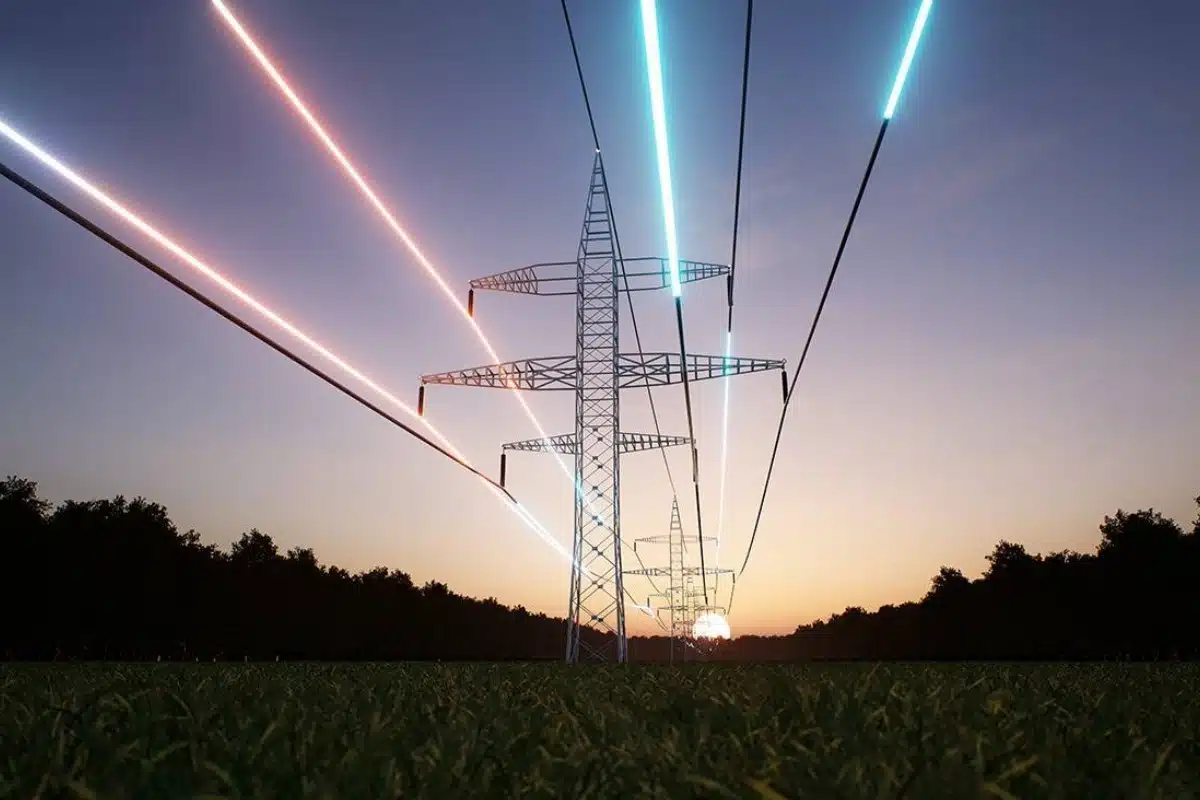The quest for sustainable energy solutions has led researchers and innovators to explore unconventional sources of power that exist naturally in our environment. Among these fascinating alternatives, telluric currents and earth batteries represent a largely untapped resource that could revolutionize how we think about renewable energy.
Our planet continuously generates electrical currents beneath its surface, flowing through the ground in patterns that have existed since Earth’s formation. These natural electrical phenomena, known as telluric currents, offer a promising avenue for harvesting clean, sustainable energy without the environmental impact of traditional power generation methods.
🌍 Understanding Telluric Currents: Earth’s Hidden Electrical Network
Telluric currents are naturally occurring electrical currents that flow through the Earth’s crust and upper mantle. These currents are generated by various mechanisms, including the interaction between the solar wind and Earth’s magnetosphere, variations in the geomagnetic field, and the conductivity differences in geological formations.
The phenomenon was first documented in the 19th century when telegraph operators noticed strange electrical disturbances in their lines. These disturbances were so powerful that they sometimes caused sparks and could even transmit messages without any battery power connected to the system.
Scientists later discovered that these currents flow continuously through the ground, with intensities varying based on factors such as solar activity, time of day, geographic location, and geological composition of the soil and rock formations.
The Science Behind Earth’s Natural Electricity
The Earth essentially functions as a giant electrical conductor. The ionosphere, magnetosphere, and the planet’s surface create a complex electromagnetic system. When charged particles from the sun interact with Earth’s magnetic field, they induce electrical currents that penetrate the ground.
These currents typically range from a few milliamperes to several amperes, depending on conditions. While this might seem modest, the continuous nature of these currents makes them an intriguing potential energy source for specific applications.
⚡ Earth Batteries: Ancient Technology Meets Modern Innovation
Earth batteries, also known as telluric batteries or ground batteries, are devices designed to capture electrical energy from the ground. The concept isn’t new—it dates back to the 1840s when inventors first experimented with extracting electricity from the Earth.
An earth battery typically consists of two dissimilar metal electrodes buried in the ground at some distance from each other. The electrodes are usually made of materials like copper and zinc, aluminum, or magnesium. When properly installed in conductive soil, these electrodes can generate a measurable voltage due to the electrochemical reactions between the metals and the minerals in the soil.
How Earth Batteries Actually Work
The operation of earth batteries relies on several principles working simultaneously. First, there’s the galvanic effect—the electrochemical reaction between dissimilar metals in an electrolyte (in this case, moist soil). Second, the batteries can tap into naturally flowing telluric currents. Third, they may capture electrical potential differences that exist between different layers of soil or between the surface and deeper ground layers.
The voltage generated by a single earth battery cell is typically modest, usually between 0.5 to 1.5 volts. However, multiple cells can be connected in series to increase voltage or in parallel to increase current capacity, similar to conventional battery arrays.
🔧 Practical Applications and Real-World Implementations
While earth batteries cannot yet replace conventional power sources for high-demand applications, they offer unique advantages for specific use cases where reliability and sustainability are paramount.
Low-Power Electronic Devices
Earth batteries excel at powering low-consumption devices such as sensors, monitoring equipment, and simple communication devices. Environmental monitoring stations in remote locations can benefit tremendously from this technology, eliminating the need for battery replacements or solar panel maintenance.
Agricultural sensors that monitor soil moisture, pH levels, and temperature can operate indefinitely using earth battery power. This application is particularly valuable in precision farming where hundreds of sensors might be deployed across large fields.
Cathodic Protection Systems
One of the most practical current applications of telluric currents is in cathodic protection systems for pipelines and underground metal structures. These systems prevent corrosion by providing a small protective current, and telluric current-assisted systems can reduce operational costs significantly.
Emergency and Backup Communication
In disaster scenarios where conventional power infrastructure fails, earth batteries can provide emergency power for basic communications equipment. Historical records show telegraph systems operating on telluric currents alone during solar storms that disrupted normal electrical systems.
🌱 Environmental and Sustainability Benefits
The environmental advantages of harnessing telluric currents through earth batteries are compelling and align perfectly with global sustainability goals.
Unlike solar panels, earth batteries require no rare earth elements or complex manufacturing processes that generate significant carbon emissions. The materials needed—basic metals and conductive materials—are abundant and recyclable.
There are no moving parts to maintain, no batteries to dispose of, and no environmental disruption during operation. The system is completely silent, produces no emissions, and has minimal visual impact on the landscape.
Zero Operational Carbon Footprint
Once installed, earth battery systems generate electricity without consuming any fuel or producing any greenhouse gases. The energy is harvested from natural processes that occur continuously regardless of human intervention.
This contrasts sharply with fossil fuel-based power generation and even with some renewable sources that require significant manufacturing inputs, regular maintenance, and eventual disposal of components.
📊 Comparing Earth Batteries to Other Renewable Energy Sources
| Energy Source | Availability | Power Output | Maintenance | Environmental Impact |
|---|---|---|---|---|
| Earth Batteries | 24/7 continuous | Low to very low | Minimal | Very low |
| Solar Panels | Daylight dependent | Medium to high | Moderate | Low to moderate |
| Wind Turbines | Wind dependent | Medium to high | High | Low to moderate |
| Hydroelectric | Water flow dependent | High | Moderate to high | Moderate |
🔬 Current Research and Technological Advancements
Modern research into earth batteries and telluric current harvesting has accelerated significantly in recent years as the demand for diverse renewable energy sources intensifies.
Universities and research institutions worldwide are investigating ways to improve the efficiency of earth batteries. Recent innovations include the use of advanced electrode materials, improved ground contact methods, and sophisticated circuit designs that can maximize energy extraction from low-voltage sources.
Nanotechnology and Advanced Materials
Researchers are experimenting with nanomaterial-coated electrodes that dramatically increase the surface area available for electrochemical reactions. These advanced materials can potentially increase the power output of earth batteries by several orders of magnitude.
Conductive polymers and graphene-based materials are being tested as electrode alternatives that could offer better longevity and higher efficiency than traditional metal electrodes.
Smart Grid Integration
One exciting development involves integrating earth battery arrays into smart microgrid systems. While individual earth batteries produce modest power, networks of thousands of units distributed across large areas could contribute meaningfully to local power grids, especially for baseload power requirements.
⚙️ Building Your Own Earth Battery: A Practical Guide
For those interested in experimenting with this technology, constructing a basic earth battery is surprisingly straightforward and requires minimal investment.
Materials Required
- Two dissimilar metal rods or plates (copper and zinc work well)
- Conductive wire for connections
- Voltmeter or multimeter for measurements
- Optional: activated carbon or coke to improve soil conductivity
- Water for moistening soil if necessary
Installation Steps
Select a location with naturally moist soil, as moisture significantly improves conductivity. Clay soils generally perform better than sandy soils due to their higher mineral content and water retention.
Insert your electrodes into the ground at least 3-10 feet apart. The optimal distance depends on soil conditions and desired voltage. Deeper insertion generally provides more stable output but requires more robust electrodes.
Connect your measuring device to verify voltage and current output. A properly constructed earth battery should produce measurable voltage immediately, though output may stabilize over several days as electrochemical processes equilibrate.
💡 Challenges and Limitations to Consider
Despite their promise, earth batteries face several significant challenges that currently limit their widespread adoption for mainstream power generation.
The primary limitation is power output. Even optimized earth battery systems produce relatively low power levels compared to conventional renewable sources. This makes them suitable only for low-power applications or as supplementary power sources.
Environmental Variability
Output from earth batteries fluctuates based on soil moisture, mineral content, temperature, and telluric current activity. During dry periods, power output can drop significantly. Seasonal variations can affect long-term reliability.
Electrode Degradation
The electrochemical reactions that generate power also gradually consume the electrode materials. Zinc electrodes, in particular, may need replacement every few years depending on current draw and soil conditions.
Scalability Concerns
Scaling earth battery systems to provide substantial power requires extensive land area and thousands of electrode pairs. The infrastructure costs and land use requirements currently make large-scale implementation economically challenging compared to other renewable sources.
🚀 Future Prospects and Revolutionary Potential
Despite current limitations, the future of earth battery technology holds considerable promise as materials science and energy harvesting technologies continue to advance.
Emerging applications in the Internet of Things (IoT) sector are particularly promising. As sensor networks expand globally, the need for maintenance-free, perpetual power sources becomes increasingly critical. Earth batteries could power billions of sensors monitoring everything from infrastructure health to environmental conditions.
Hybrid Energy Systems
The next generation of renewable energy installations may incorporate earth batteries as part of hybrid systems that combine multiple renewable sources. During periods when solar and wind production are low, even the modest contribution from earth battery arrays could help maintain grid stability.
Space and Extreme Environment Applications
Interestingly, similar principles could potentially be applied on other planets or moons where conventional solar power is impractical. Mars, for instance, has subsurface ice and mineral-rich soil that might support earth battery-type systems.
🌟 Maximizing the Potential of Natural Energy Harvesting
The key to unleashing the full potential of telluric currents and earth batteries lies in understanding their optimal applications rather than trying to make them compete directly with high-output renewable sources.
For distributed sensor networks, remote monitoring stations, emergency backup systems, and low-power applications, earth batteries offer unmatched reliability and sustainability. They require no sunlight, no wind, no fuel, and minimal maintenance.
Educational institutions are beginning to incorporate earth battery projects into their curricula, helping new generations of engineers and scientists understand the principles of natural energy harvesting. This educational value alone makes the technology valuable for advancing our collective understanding of sustainable energy.
🔋 Integrating Earth Batteries into Modern Energy Strategies
Forward-thinking energy planners are beginning to recognize that future sustainable energy systems will likely be diverse portfolios of complementary technologies rather than single dominant sources.
Earth batteries may never power cities, but they could eliminate the need for billions of disposable batteries in remote sensors and devices. This alone would represent a significant environmental victory, preventing toxic battery waste while reducing the carbon footprint of manufacturing and transportation.
Communities interested in energy independence are experimenting with earth battery arrays as part of comprehensive renewable energy strategies. While the contribution is modest, every kilowatt-hour generated without carbon emissions moves us closer to sustainability goals.
🌍 A Complementary Piece of the Renewable Energy Puzzle
The story of earth batteries and telluric current harvesting reminds us that sustainable energy solutions don’t always require cutting-edge technology or massive infrastructure investments. Sometimes the most elegant solutions involve working with natural processes that have existed for billions of years.
As we face the urgent challenge of transitioning away from fossil fuels, every renewable energy source deserves consideration and development. Earth batteries may not be the complete answer, but they represent an important piece of the puzzle—a reminder that Earth itself offers abundant energy in forms we’re only beginning to fully understand and utilize.
The journey toward complete energy sustainability will require creativity, persistence, and willingness to explore unconventional solutions. By harnessing the power of telluric currents through earth batteries, we’re not just generating electricity—we’re reconnecting with the fundamental electrical nature of our planet and finding harmony between human needs and natural processes.
Whether you’re a researcher pushing the boundaries of energy harvesting technology, an environmentalist seeking the most sustainable power solutions, or simply someone fascinated by the hidden electrical currents flowing beneath our feet, earth batteries offer a compelling glimpse into the future of truly sustainable energy.
Toni Santos is a visual researcher and educational designer specializing in tactile learning tools, exploring how hands-on, sensory experiences can illuminate ancient construction techniques, lost technologies of early civilizations, sacred geometries and earth alignments, and mysterious energy sources. Through embossed maps, textured models, and handcrafted manipulatives, Toni investigates how physical interaction deepens understanding, memory, and creativity, while uncovering the subtle ways these tools convey knowledge across cultures and ages. Blending design theory, educational psychology, and archival research, Toni curates case studies, visual explorations, and instructional resources that celebrate the craft, innovation, and cognitive power of touch-based learning, inviting educators, designers, and curious minds to engage with the hidden patterns and energies that have shaped human history.




